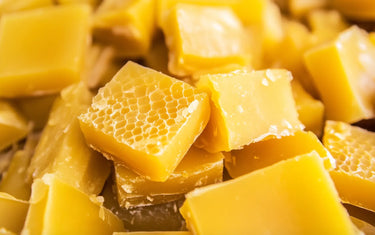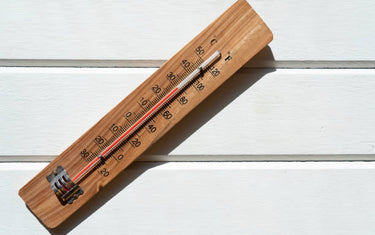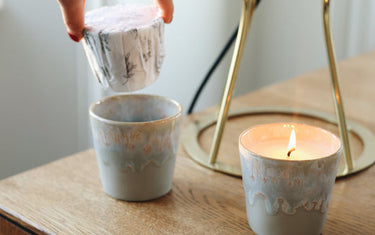5 min read / 4 April 2023 / Laura Garvin Gomez
Frankincense and Myrrh Oil: What is it Used For?
Explore the ancient uses and modern applications of Frankincense and Myrrh oil in our comprehensive guide.

When you think of frankincense and myrrh oil, you may cast your thoughts back to biblical stories that appear around Christmas time.
It gives you an idea of just how long people have valued these two natural resins and oils, which remain highly regarded for their health benefits as much as their wonderful fragrances.
We take a closer look at frankincense oil and myrrh oil to explain what it used for, how they could improve your health and how to make your own blend at home.
What is frankincense essential oil?Frankincense essential oil is extracted from the resin of the Boswellia serrata, Boswellia frereana or Boswellia carterii trees, which are grown in Somalia and regions of Pakistan. It was traded in the Middle East and Africa for thousands of years and was widely used in Ancient Rome and Greece. These civilisations used frankincense for medicinal purposes, and it became one of the most valuable commodities in the world during the Middle Ages, at one stage holding more value than gold. Frankincense remains one of the most popular oils used in aromatherapy, helping to ease various skin conditions and mood management. |
What is myrrh essential oil?Myrrh essential oil is sourced from the sap of the myrrh tree, which is mostly found in the north-eastern African and southwest Asian regions. The oil had particular spiritual and religious significance in Jewish and Christian faiths, with many believing it held purifying properties that made it suitable for use in religious rituals and ceremonies. It is still widely used today as an antiseptic or to treat skin ailments and wounds, such as psoriasis and eczema. |

What is myrrh and frankincense used for?
Some of the ways myrrh and frankincense are used include:
- Myrrh could support oral health: Myrrh has long been used to treat oral inflammation and infections, and it is also included in some natural toothpaste and mouthwashes. Research also suggests that people with gingivitis who use a mouthwash containing myrrh oil could see symptoms of the condition reduce.
- Frankincense may be effective for IBD: Inflammatory bowel diseases such as ulcerative colitis and Crohn’s disease may be helped by using frankincense. A study found that the H15 extract may be more effective in treating Crohn’s disease compared to standard anti-inflammatory prescription drugs used to treat the condition.
- Myrrh is used to treat skin wounds and infections: One study found that an essential oil blend of myrrh, lavender, Hawaiian sandalwood, rose, frankincense and helichrysum helped to heal skin wounds. While it wasn’t clearly established that the positive results were a direct result of using myrrh, it does suggest it could prove beneficial.
- Frankincense can improve asthma symptoms: Bronchial asthma could be improved through continued use of frankincense, as shown in a 1998 study. The results found that asthma indicators and symptoms decreased, and research is ongoing to discover more evidence about how frankincense could reduce asthmatic reactions to environmental allergens.
How to make frankincense and myrrh oilIf you want to make frankincense and myrrh directly from the resin (which can be purchased online) follow these steps:
You can add more essential oils to the mix, to further enhance the properties and to enjoy your own homemade oil. Before using this blend on your skin, be sure to mix it with a carrier oil. How to use frankincense and myrrh essential oilDilute with your carrier oil of choice and add a few drops to your pulse points or bottom of your feet. Another option is to mix it with your favourite moisturiser or body lotion as part of your daily skincare routine. You can also diffuse frankincense or myrrh with an oil diffuser, so you simply inhale its properties as you relax and unwind at home. Some people inhale the oil directly from the bottle or by adding a few drops to a cloth or towel, leaving it under their pillow as they sleep at night. Other ways of using frankincense or myrrh oil include diluting with a carrier oil before using it as a massage oil or adding the oils to a warm bath. They are also commonly used as part of candle and soap recipes, as well as potpourri mixtures. |

What is the best frankincense essential oil to use?
Try our frankincense serrata essential oil as a starting point, which many people love for its wonderfully smooth and luxurious aroma. Use the oil on your skin to reduce the signs of ageing or to boost your mood when feeling low, with its woody scent serving as the perfect pick me up. Frankincense Serrata has a lot of similarities to Frankincense Frereana and Frankincense Carterii, with only the scent being noticeably different.
What is the best myrrh essential oil to use?
Much like frankincense, myrrh essential oil is often used to reduce the signs of ageing, as well as for pain relief and to reduce swelling. When the two oils are combined many of their properties can be enhanced, giving you more opportunity to enjoy their many health benefits. To ensure the resin is softer and easier to use, it has also been treated with benzyl benzoate.

Frankincense and myrrh are two essential oils that complement each other perfectly, whilst also offering their own unique benefits when used individually.
Whether it’s for treating wounds and infections or improving breath control, you can enjoy both oils in a variety of ways, be it through a diffuser, soap, candle or massage. And as is always the case with essential oils, be sure to follow the product instructions and always dilute with a carrier oil.
You can find any of these oils for a discount by signing up for a wholesale account. Not only will you save money long-term, but you’ll also get access to exclusive deals.









